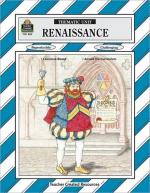|
This section contains 1,281 words (approx. 5 pages at 300 words per page) |

|
Church and Spectacle. For most of the later Middle Ages the church was an important locus for theatrical performance. Celebration of the Eucharist, the centerpiece of Catholic liturgy, was itself a kind of theater that dramatized the miracle of transubstantiation for the faithful. During the high holy days of the Christian calendar, choirboys, novitiates, and monks often staged processions and plays. In the French city of Beauvais, for example, choirboys staged plays at Christmastide, replete with fanciful singing and dancing sequences reminiscent of the riotous processions led by young novices during Feast of Fools and May celebrations. While medieval bishops protested from time to time about such "inhonesti ludi" (dishonorable plays) and pastimes, they did little to stop theatrical performances, which remained an integral part of the festal culture of Europeans until the Reformation. Lay performers also staged plays, invariably about religious themes, in churches...
|
This section contains 1,281 words (approx. 5 pages at 300 words per page) |

|




